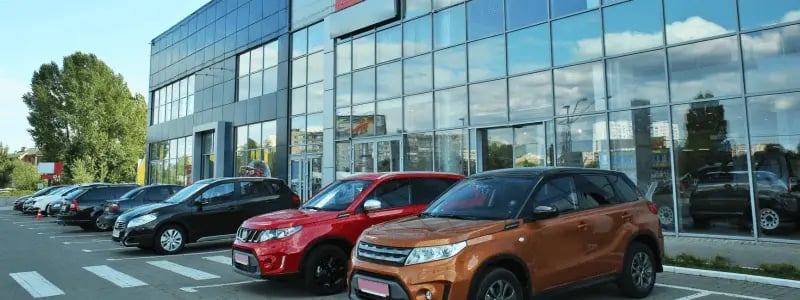Why Used Cars Now Sell In Just 29 Days, And How Dealers Can Capitalise
by Andrew Marsh on Jul 15, 2025 11:06:22 AM
Over the past three years, the market has shifted dramatically. According to Auto Trader data, the average time to sell a used car fell from 32 days in 2022–2024 to just 29 days in mid‑2025. That’s not just a trend, it’s a signal that the pace of opportunity (and competition) has accelerated, and smart dealers are lining up to profit.
👉 Accelerated stock turn: what's driving this?
👉 Marsh Finance: helping dealers accelerate sales
👉 Inventory & pricing playbook for 29-day selling
👉 Margin optimisation: sell faster, sell smarter

Accelerated Stock Turn: What’s Driving This?
- Healthy pricing & stable demand
Supply constraints eased slightly this spring: used stock rose 3% year-on-year according to AutoTrader, but demand remains strong. Buyers are out there, and they want cars quickly. - Smarter digital conversion
Tools like Auto Trader’s Deal Builder, enhanced image management, and AI descriptions mean vehicles list faster, look better, and convert quicker… squeezing days off the selling cycle - Data-led pricing discipline
Retailers are pricing with more precision. This avoids sitting on stock while still hitting margin targets.

Marsh Finance: Helping Dealers Accelerate Sales
At Marsh Finance, we support dealers adapting to this faster market:
- Fast-track funding to purchase and retail cars at pace, matching sale cycles with financing timelines.
- Margin-sensitive lending, avoiding squeeze when turnover is swift.
- Inventory visibility: We share our financing data insights so dealers can forecast demand and optimise stock.
%20(1).webp?width=800&height=300&name=Car-Finance-Money-4%20(2)%20(1).webp)
Inventory & Pricing Playbook For 29-Day Selling
Here are strategic levers dealers can pull:
- Inventory Mix & Turn Strategy
- Prioritise high-turn models: mainstream hatchbacks and SUVs still shift fastest.
- Pair with margin-rich niches: hybrid or premium segments might move slower but deliver better returns.
- Avoid over-stocking while turnover is fast; tie-up costs can erode margins.
- Pricing for Speed
- Use dynamic pricing weekly: price high initially, then adjust quickly based on engagement metrics.
- Incentivise quick sell-through with back-end bonuses.
- Monitor competitor pricing daily and act fast; near real-time data wins in a 29-day world.
- Digital Presence & Convertibility
- Leverage AI-enhanced tools for sharper listings, photos, descriptions, and features.
- Enable full ‘digital retail’ journeys; reservations, deposits, paperwork — online before the in-person exchange.
- Make finance front and centre online; affordability tools help convert earlier in the cycle.
.webp?width=800&height=300&name=Digital%20Optimisation%20(1).webp)
Margin Optimisation: Sell Faster, Sell Smarter
Faster selling doesn't have to mean lower profit. Here’s how to capture value:
|
Strategy |
Benefit |
|
Structured finance packages |
Higher PVR, lower perceived cost |
|
Faster loan drawdown |
Reduces stocking cost |
|
Digital upsell opportunities |
Add-ons at reservation, like servicing and warranties |
|
Refinance unlocked equity |
Turns quick-sale profits into reinvestment capital faster |

Real-World Dealer Example
Take Maple Motors, a mid-sized independent dealership in the Midlands specialising in family SUVs and hatchbacks. A few months ago, they held on to stock for an average of 36 days, which meant money was tied up longer than it needed to be, limiting how quickly they could reinvest in fresh vehicles.
Here’s how they turned it around:
- Sharper Listings That Sell Faster
They started using AI tools to enhance vehicle imagery and descriptions. Listings looked more professional, detailed, and consistent, which helped cars stand out and increased online engagement. Their online finance calculator and “apply now” CTA also made it easier for buyers to act quickly. - Dynamic Pricing to Stay Competitive
With support from Marsh Finance's market insights, they began repricing weekly based on local demand and competitor activity. Instead of waiting for price drops to happen reactively, they adjusted early, keeping days in stock low without compromising margin. - Finance-First Sales Strategy
By promoting tailored finance offers online, before the customer even visited the forecourt, they were pre-qualifying more leads and turning browsers into buyers faster. - Stocking Smarter with Fast Funding
Every time they sold a vehicle, they used Marsh Finance's flexible stocking facility to replace that car quickly, often within 24–48 hours. This kept their forecourt fresh and aligned with what was actually selling.
By doing the above, Maple Motors cut their average stock turn from 36 days to just 29, matched the national average, and improved profit per vehicle by £250. They weren’t just selling more cars, they were selling the right cars, faster, with better returns.
Ready To Sell Faster?
Used cars are flying off forecourts faster than ever. But the real advantage comes when your finance journey moves just as quickly. At Marsh Finance, we help dealers and brokers give customers the confidence to say yes sooner, with fast decisions, flexible terms, and a seamless lending experience.
- December 2025 (2)
- November 2025 (3)
- October 2025 (12)
- September 2025 (8)
- August 2025 (13)
- July 2025 (25)
- June 2025 (17)
- May 2025 (10)
- April 2025 (5)
- March 2025 (6)
- February 2025 (4)
- January 2025 (4)
- December 2024 (10)
- November 2024 (14)
- October 2024 (12)
- September 2024 (25)
- August 2024 (74)
- February 2024 (1)
- May 2023 (2)
- March 2023 (1)
- February 2023 (1)
- December 2022 (1)
- October 2022 (2)
- August 2022 (1)